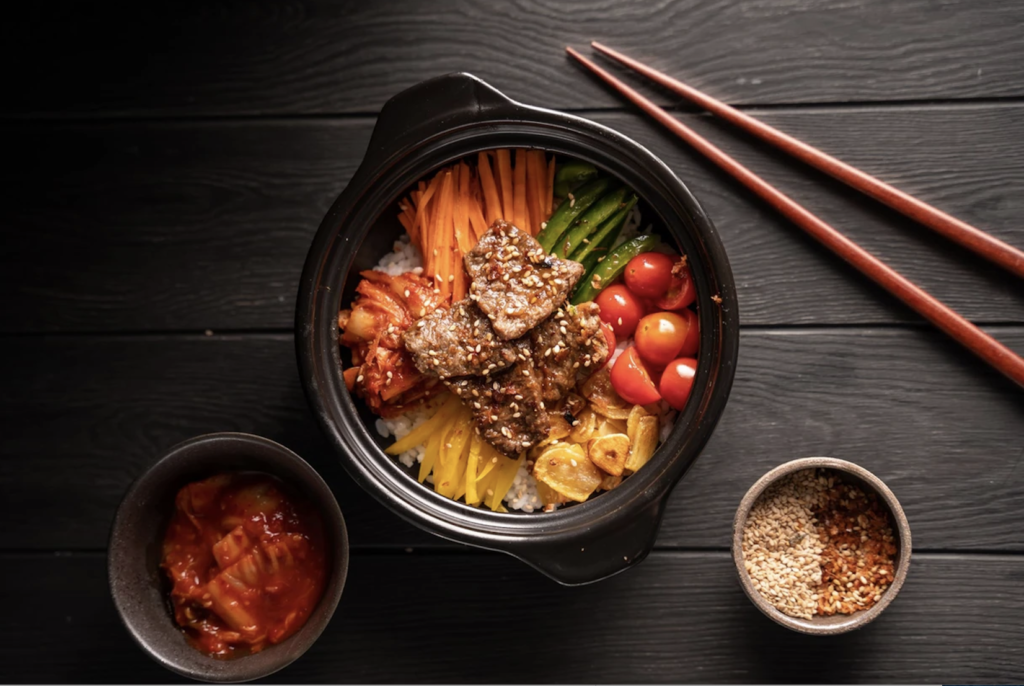
The meat industry is about to undergo a “cultural” revolution…..a tissue culture revolution, to be precise.
The soaring global demand for meat has opened doors to alternative ways of producing consumable animal tissue, ushering in the first major challenge to industrial-scale animal agriculture in history. Numerous companies worldwide, some backed by major investors, are now applying tissue culture techniques to produce beef, chicken, and even some types of seafood, without raising or killing animals.
Though this emerging industry is still in an early phase of development, it took center stage in the US last November, when the Food and Drug Administration declared tissue cultured chicken safe for human consumption.
It may still be several years before cultured meat products hit mainstream grocery shelves, but it is safe to say that the…ahem…cows have left the barn.
Surging Demand for Meat
The world’s population is projected to increase to nearly 10 billion by 2050. That’s almost a quadrupling of the 2.58 billion humans living on the planet in the early 1950s. As of 2020, we already reached almost 7.8 billion, according to Worldometers.
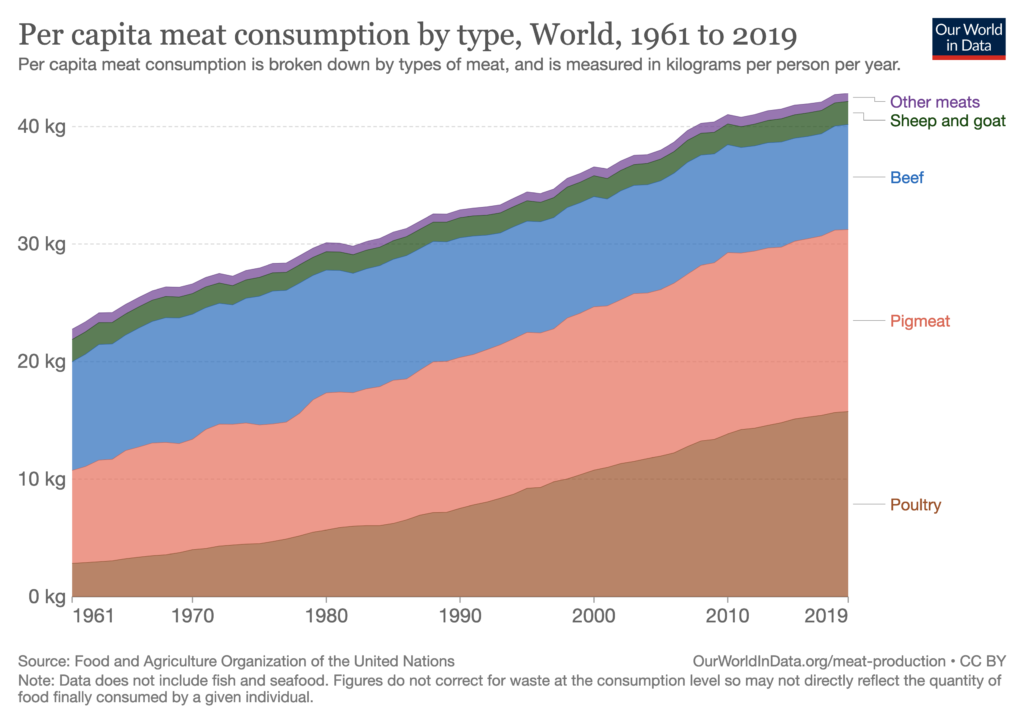
Along with this unprecedented population growth comes an equally unprecedented surge in demand for…well…just about everything, especially food.
Adding to the complexity of this situation is the fact that more people worldwide have shifted to diets rich in meat and dairy. A 2019 report by researchers at the non-profit Our World In Data tells the story in astonishing detail:
- Globally, meat production is more than 3 times higher than it was in the 1970s.
- Each year more than 80 billion animals are slaughtered for meat.
- Worldwide, humans are producing and consuming more than 340 million tons of meat annually.
- Per-capita meat consumption, which averages roughly 43 Kg per year across the globe, rose in close correlation with per-capita income growth.
- Livestock agriculture has a massive environmental impact, in terms of land and water use, and also in terms of greenhouse gas emissions.
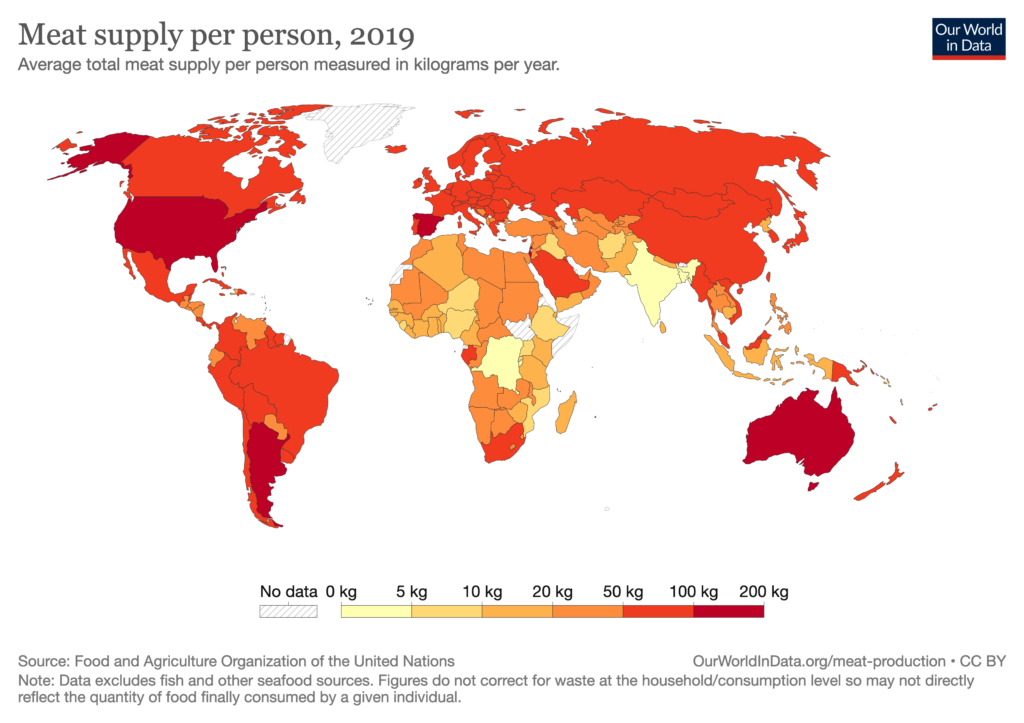
Despite the best efforts of public health groups, animal rights advocates, and some religious leaders to convince people to adopt vegetarian—or at least predominantly plant-based—diets, all indicators show that on the whole, our species is eating more meat, not less.
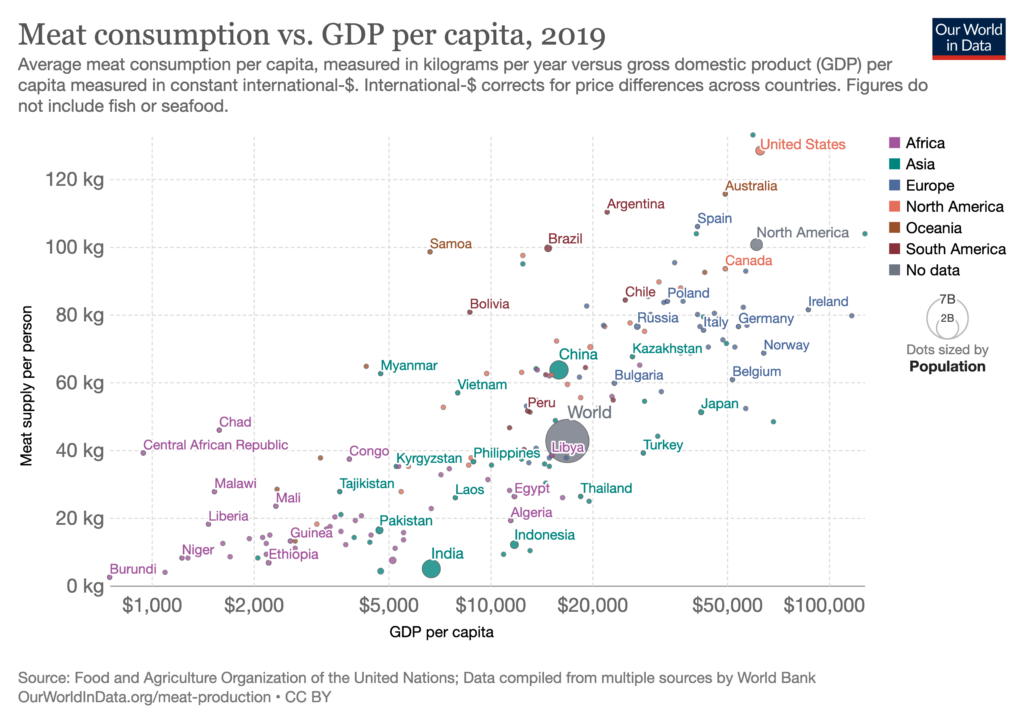
Roughly 1.3 billion people worldwide depend on animal agriculture for their livelihoods, and the meat and dairy industries have been racing to keep up with the demand.
Cellular Agriculture
These and other troubling facts about the devastating environmental impact of raising livestock have raised major questions about whether meat production as we have always known it is sustainable. A growing number of people are concluding that it is not.
Enter cellular agriculture and tissue-cultured meat.
The cultured meat industry is centered on the use of animal-derived cell samples to grow massive quantities of tissue in bioreactors. First developed in 2013 in the Netherlands, the process involves harvesting muscle cells from the desired animals, and then growing them in nutrient-packed liquid media. Once a good cell line has been established, it is then introduced into bioreactors that will provide the cells with everything they need to divide and multiply rapidly.
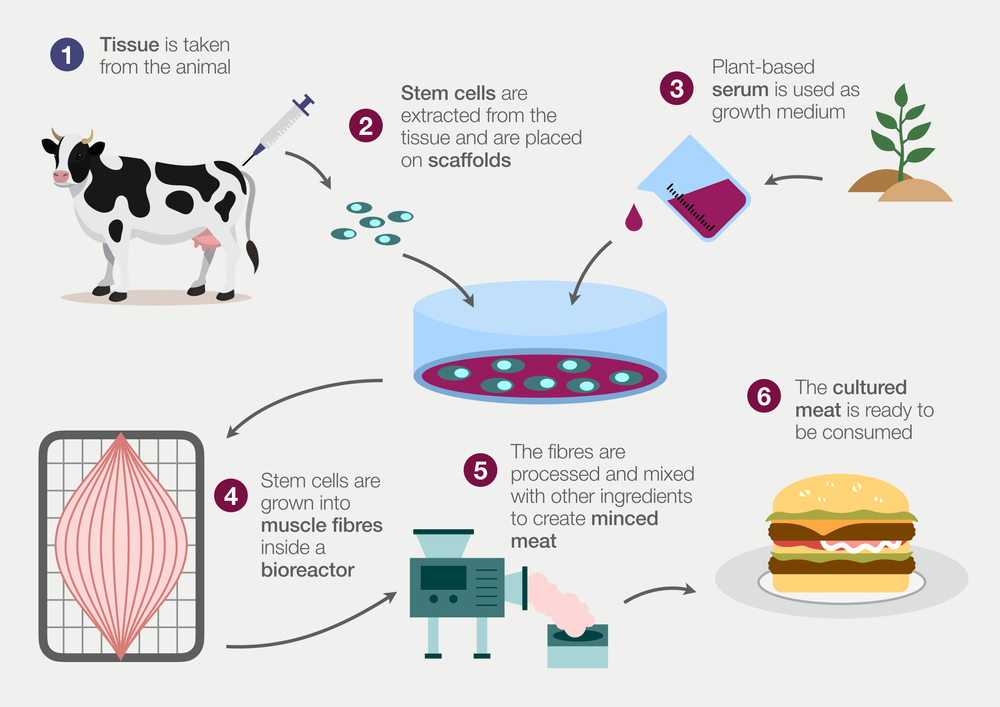
The entire growth cycle can take around 14 days from start to finish, and the end product is raw meat that, at the cellular level, is the same as traditional meat taken from slaughtered animals. The cultured meat can be cut up and formed into strips, patties, sausages, or whatever else we humans desire.
There are companies now applying variations of this general process to grow chicken, beef, and even some types of seafood including shrimp, crab, and lobster.
The nascent cultivated meat industry has drawn the attention of investors who are fueling a worldwide race to market. In a landmark moment, cultivated chicken was served at last year’s COP27 climate conference, raising general awareness of this phenomenon.
In theory, at least, cultured meat—sometimes called “cultivated meat,” “slaughter-free meat” and “cell-based meat” or derided by its opponents as “Frankenmeat” or “artificial meat”– could help meet the world’s insatiable demands without the need to raise and kill any more animals.
It’s not a new idea.
Back in 1931, Winston Churchill published an essay called Fifty Years Hence, in which he predicted: “With a greater knowledge of what are called hormones, i.e. the chemical messengers in our blood, it will be possible to control growth. We shall escape the absurdity of growing a whole chicken to eat the breast or wing, by growing these parts separately under a suitable medium.”

Churchill’s timeline was off by about 40 years, but he foresaw a possibility that is just now becoming practical and marketable.
Cravings & Conscience
Cultivated meat is not quite ready for prime time. The production processes are still evolving, and the cost is still well above conventionally grown meat. But it probably won’t be long before the first consumer-facing products hit American grocery shelves.
In clearing cultured meat as safe for human consumption, the FDA gave a green light to Upside Foods, a US-based company formerly known as Memphis Meats, to bring its tissue-cultured chicken to market once the company’s facilities and its products have been inspected and cleared by the US Department of Agriculture.
Boasting that it will produce “the fried chicken chickens dream about,” Upside’s website neatly summarizes the entire drive toward cultured meat: “We love meat. We also love animals. And the blue-green planet we share. So we’re making meat a new way, cultivating it directly from animal cells to satisfy our cravings, our conscience, and our heart.”

Upside has attracted some high-profile investors. In its early stage, while still known as Memphis Meats, the company raised $17 million in start-up funds from Bill Gates, Richard Branson, and Jack Welch, among others. A subsequent Series B round raised $161 million from investors that included Big Ag players like Cargill and Tyson Foods.
Singapore is way ahead of the US in embracing cultured meats. Back in 2020, it became the first country to approve cultured chicken nuggets for sale nationwide.
Shiok Meats, based in Singapore, has created a huge shrimp farm all derived from one single shrimp cell. Shiok’s founders Ka Yi Ling, PhD, and Sandhya Sriram, PhD, believe their “cultivated crustacean” products can revolutionize seafood. They offer shrimp, crab, prawn, and lobster meat that is healthy, nutritious, free of hormones, antibiotics, and microplastics.
They say their production process is cruelty-free and more environmentally friendly than aquaculture. They’ve even figured out how to turn the nutrient media in which the cell cultures are grown into a marketable seasoning powder, thus minimizing waste output.
Shiok—derived from a Malay word that means something akin to “feel-good” also owns Gaia Foods, a company specializing in tissue culture production of red meats.
A Worldwide Phenomenon
Cultured Meat start-up companies have emerged all over the world. Here are a few notable ones, though there are currently many others, and still more are likely to emerge in the coming years:
Believer Meats: Formerly known as Future Meat Technologies, Believer Meats plans to open the first commercial-scale cultured meat production facility on US soil by the first quarter of 2024. Construction is already underway. The company, based in Israel, projects that once it hits the “start” button on the new facility, it will be able to produce 22 million pounds of meat per year. Investors include Tyson Foods and Archer Daniels Midland. Michael Lenahan, who heads Believer’s US operations, says the company will begin with chicken, but is already planning to introduce tissue-cultured lamb to the global market.
Mission Barns: A leader among the roughly 80 cultured meat startups in the San Francisco Bay area, Mission Barns made global news early in 2023 when it debuted its ground pork meatballs and bacon to a select group of taste-testers. Among them was Oliver Milman, a writer for The Guardian, who also happens to be a long-time vegetarian. He described the offerings like this: “The meatball was succulent, the bacon was crisp and, even to a vegetarian, both had the undeniable quality of meat.”

Mission’s products combine cultivated meat, with pea-derived plant proteins, and a patented substance called “Mission Fat,” also produced by cell culturing. The company has partnered with a well-established sausage company called Silva, to bring a new line of tissue cultured sausage products to market.
Meatable: This Dutch company is unique in that it is using pleuripotent stem cells, rather than differentiated muscle tissue, to culture its meats. This enables Meatable’s food engineers to guide the development and differentiation of the cultures into muscle, fat, or connective tissue—a process that the founders believe will solve some of the texture challenges that have limited the culinary appeal of cultured meat so far. Cultured meats are grown from actual animal muscle cells, but they typically lack the connective tissue and fat that gives meat it’s complex texture. Meatable aims to change that.
Eat Just: Originally known as Hampton Creek, this San Francisco company has been a leader in the plant-based egg sector for several years now. Recently, with the launch of Good Meat, the company has jumped into production of cultured chicken and beef, a venture fueled in part by investments from billionaire Li Ka-shing, Yahoo co-founder Jerry Yang, and several other large corporations.
Eat Just is building what it claims will be the world’s biggest bioreactor facility for cultured meat production. CEO Josh Tetrick recently told Forbes that the company will be able to generate on the scale of 40 million pounds of meat, or more, within the next several years, and that its products will reach price parity with conventional meat by 2027. Good Meat is already commercially available in Singapore. The company’s “Chicken Bites” were the first cultured meat products to be approved by Singapore’s regulatory agency.
Aleph Farms: Specializing in cultured beef, Aleph Farms aims to be the first company to produce completely tissue-cultured steaks that include the marbling and juiciness that meat-eaters value. Aryn Baker who recently taste-tested one of Aleph’s steaks for TIME magazine, gave it high marks for flavor, though she noted that, “The square shape and thin cut betray my steak’s bioreactor origins.”
Aleph already has sights set well beyond the ordinary consumer market. Since 2019, the company has partnered with 3D Bioprinting Solutions on a “Meat for Space” program to produce meat in zero-gravity conditions on the International Space Station.
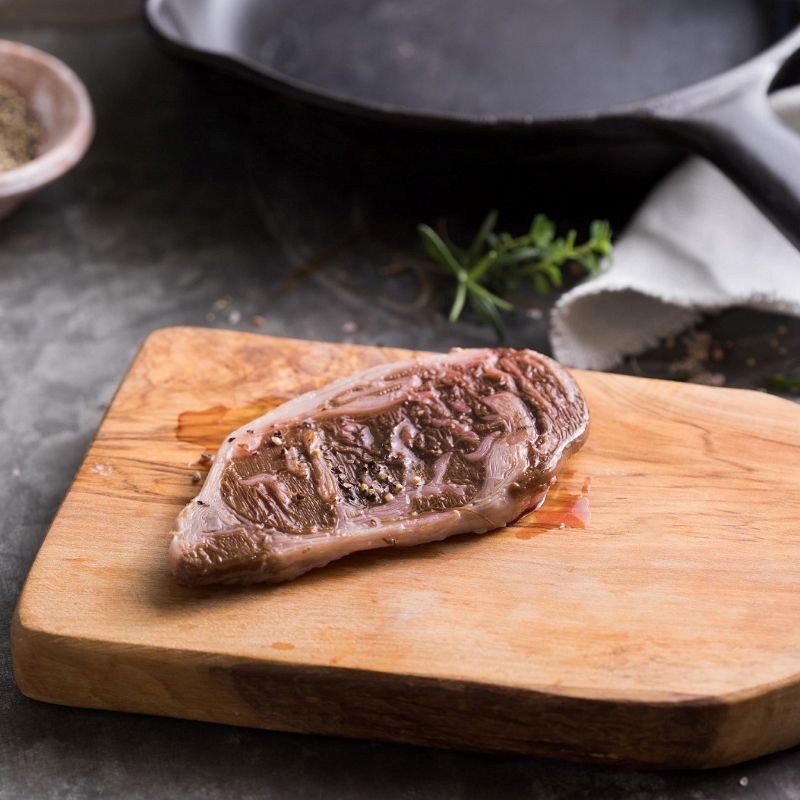
Steakholder Foods: Aleph isn’t the only company working to put bioreactor beef on the world’s banquet plates. Steakholder Foods, formerly known as MeaTech 3D, is one of the few publicly traded cultured meat companies. Last Fall, the company began production of its“Omakase Beef Morsels”—meat cubes made from alternating layers of bioprinted Wagyu beef muscle and fat.
Steakholder has also partnered with Umami Meats—a company specializing in cultured “no catch” seafood—to build machines that can print grouper, eel, and in the future, other types of fish tissue for human consumption.
Clear Meat: Based in Delhi, Clear Meat is India’s first cultured meat company. It produces cultured “EcoMeat” chicken and beef keema—the finely minced meat used widely in India, Pakistan, and other regions of South Asia and the Middle East. Clear Meat claims it’s chicken product will cost Indian consumers less than conventional keema from slaughtered chickens–800-850 rupees (US$10.77–11.44) versus roughly 1,000 INR ($12.10 rupees) for equivalent weights of processed chicken. Clear also markets a range of “Clear X9” growth medium formulas for research and commercial use.
Benefits of Cultured Meat
Based on company claims and enthusiastic investor comments, cultured meat has major advantages over meat produced via conventional animal agriculture. Among the benefits:
- Less Cruelty: There’s no way around the fact that raising animals for slaughter—especially on today’s mass market scales—involves extreme cruelty from start to finish. Though cultured meat production is not entirely animal-free, it nearly eliminates the need to breed and then kill billions of animals.
- Easier on the Environment: Industrial-scale tissue culture does require significant energy and material resources, but it is nowhere near as resource-intensive as conventional livestock agriculture. Advocates say it would obviate the need to clear-cut the world’s forests and jungles for ranches and feedlot operations. Cultured seafood would relieve human pressures on the world’s already over-fished oceans. It would also eliminate huge quantities of greenhouse gases. The United Nations Food and Agriculture Organization estimates that livestock currently generate 7.1 gigatons of CO2 equivalents per year, roughly 14.5% of all greenhouse gas emissions.
- Antibiotic–Free: Livestock raised in confinement are highly susceptible to disease. Likewise, the slaughter and butchering of animals can be a dirty, disease-prone process. According to the FDA, roughly 70% of all medically-useful antibiotics sold in the US are used not in clinics to treat people, but on farms to treat livestock. This is a major driver of antibiotic resistance. Since cultured meat is grown in highly controlled bioreactors, it does not require use of antibiotics—at least that’s what many companies are claiming. It could also potentially lower incidence of foodborne illnesses.
- Wider Access to Nutritious Protein: If—and it’s a big “if”—cultured meat producers are able to drive production costs down to equivalence with conventional meat, or lower, they could potentially make nutritious animal protein available to a larger proportion of the world’s population.
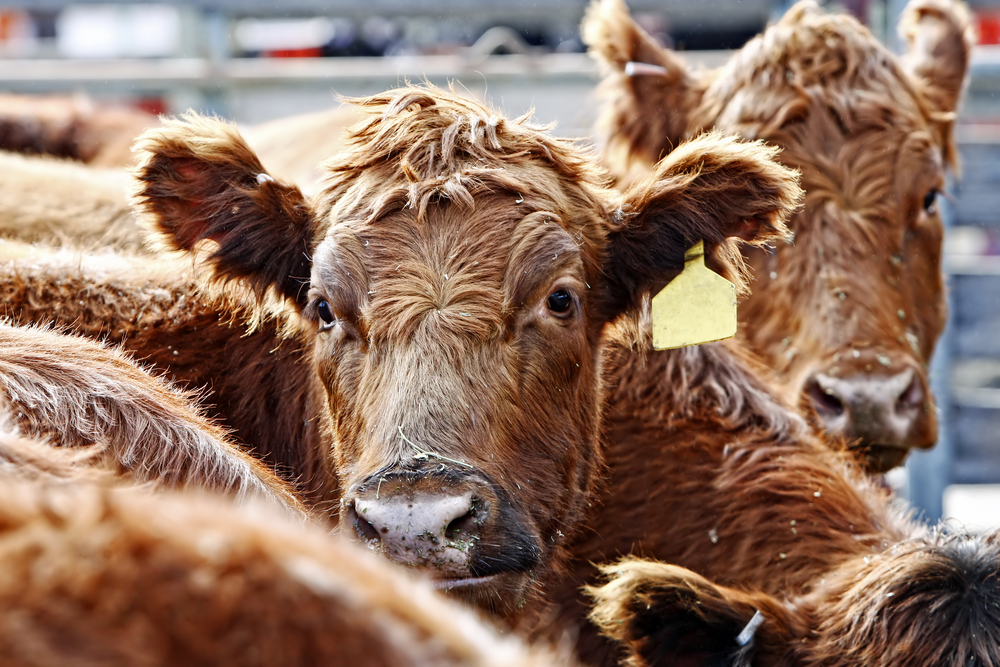
Italy Objects
In principle, these benefits are hard to dismiss. But like all technological revolutions, there could be downsides to cultured meat. And while countries like Singapore, Israel, India, and the US forge ahead enthusiastically, others such as Italy are far more hesitant.
Francesco Lollobrigida, Italy’s Minister of Agriculture and Food Sovereignty recently forwarded a bill that would ban cultured meat, cultured milk, and other “synthetic” foods in Italy.
Protection of the country’s venerable food and wine traditions has become something of a fervent cause for some of Italy’s far-right politicians, including Lollobrigida and his sister-in-law, Prime Minister Giorgia Meloni, who represent the conservative Fratelli d’Italia (Brothers of Italy) party. According to a recent report by the BBC, this party—along with Coldiretti, Italy’s largest association of farmers—view lab-cultured meat and dairy as a threat to the nation’s agriculture, and even to the Mediterranean diet itself.
Italy’s ban would also apply to other non-traditional ingredients such as cricket or locust flour.
Even if the Italian parliament passes the bill, the resulting ban may be more symbolic than impactful because European Union (EU) rules could override it, if and when the EU formally approves the sale of cultured meat. The EU has yet to issue formal rules or guidelines.
Unanswered Questions
In principle, these benefits are hard to dismiss. But there are still many unanswered questions, logistical hurdles, and potential problems with cultured meat. Among them:
- Dependence on Fetal Bovine Serum: Many of the current production systems depend on growth factors derived from fetal bovine serum (FBS). Widely used in all forms of tissue culture, FBS is considered a “byproduct” of meat production. It is collected in commercial slaughterhouses from fetal cows. This means many of the soon-to-market cultured meats are not completely animal-free or cruelty-free. A rapid expansion of cultured meat would drive demand for FBS. Several emerging companies, notably Meatable and Future Meat, have developed alternative growth techniques that do not require FBS. For now, however, FBS-based growth stimulation is still the norm.
- Cost: In 2013, the first cultured hamburger cost roughly $330,000 to make. Costs have come down markedly since then, but in general, the total cost for finished products is still considerably higher than for traditional slaughtered meat. The culturing techniques now used in the food industry were first developed by pharmaceutical and biotech companies to produce drugs and vaccines. Generally, this is a small-batch, low-yield, high-cost process. The challenge for cultured meat startups is to find ways to increase output at lower costs. Growth serum is the most expensive component in the process, costing roughly $1,000 per liter, and representing approximately 80% of total production cost. If manufacturers develop lower-cost alternatives, they’ll be able to reduce prices significantly, but they’re not there yet.
- Highly Processed: Though cultured meats will be marketed to natural foods consumers and healthy living enthusiasts, there’s no way to ignore the fact that these are highly processed, engineered products. That will likely bother many consumers. Healthwise, there are no signs that cultured meat will be any more or less healthy for humans than conventionally raised meat. But seeing as none of these products have yet reached mass market, there are many unanswered questions.
- Corporate Control of Food: Some observers view the cultured meat movement as yet another step toward total corporate control of human food supplies. Widespread adoption of cultured meat would, critics say, will drive small farmers and ranchers further to the economic margins while consolidating ever-greater control in the hands of giant agribusinesses. Again, that will bother some consumers. Given the degree of investment from major corporate players, there’s some truth to this assertion, as it is likely that once cultured meat products hit the market, the big food companies will acquire the startups. But the truth is, big corporations already control—directly or indirectly—the majority of farms and ranches worldwide. If cultured meat does catch on, it could potentially reduce demand for livestock-derived meat which would affect the global demand for corn and soy—primary components of animal feed. That would, indeed, have economic ripple effects.
- Public Acceptance: In concept, there’s a lot to like about cultured meat. But broad consumer acceptance will come down to cost, flavor, and texture. By all accounts, existing cultured meats still lack the true texture of meat. There’s also the matter of standardized sizes and forms. Will meat lovers accept uniform steaks and chops?
Religious & Ethical Concerns
Cultured meats raise interesting questions for vegetarians, especially those who chose vegetarian diets for animal welfare reasons. Since it is not directly obtained from slaughtered animals, some vegetarians might find it acceptable.
The Hindu religion advocates vegetarianism based on the core value of Ahimsa –the striving to reduce harm. Many Buddhists are vegetarians for the same reasons. Cultivated meats would certainly minimize the ghastly level of animal suffering inherent in current methods of meat production.
According to an article on the Hindu American Association website, opinions about cultured meats are divided among Hindus. Though these new forms of meat involve less cruelty, they still retain the properties of meat which, in Ayurvedic terms is tamasic (leading to dullness, apathy, negative emotions).
Among Jewish rabbinical authorities, opinions are divided. Some hold that if the original cell lines and growth factors were harvested from Kosher animals, then the resulting cultured products are Kosher. Others contend that meat can only be Kosher if it is obtained from an animal slaughtered in the proper ritual way. This means that most of the emerging cultured meat products would not qualify, since the tissue is grown from samples taken from a living animal.
Similarly, some Islamic authorities have ruled that these products can only be deemed Halal if all the components of its production were obtained from Halal animals, treated and slaughtered in the ritually proper ways.
A review article in the journal Frontiers in Nutrition notes that “because of its nebulous status, religious authorities are still debating” whether or not lab-grown meat can fit with long-established religious dietary doctrines.
Manufactured Demand?
Financial writer Chloe Sorvino, author of the book Raw Deal, questions whether mainstream Americans are actually interested in tissue cultured meats at all. In a recent interview with Slate, she suggests that superstar startups are manufacturing more than just animal tissue.
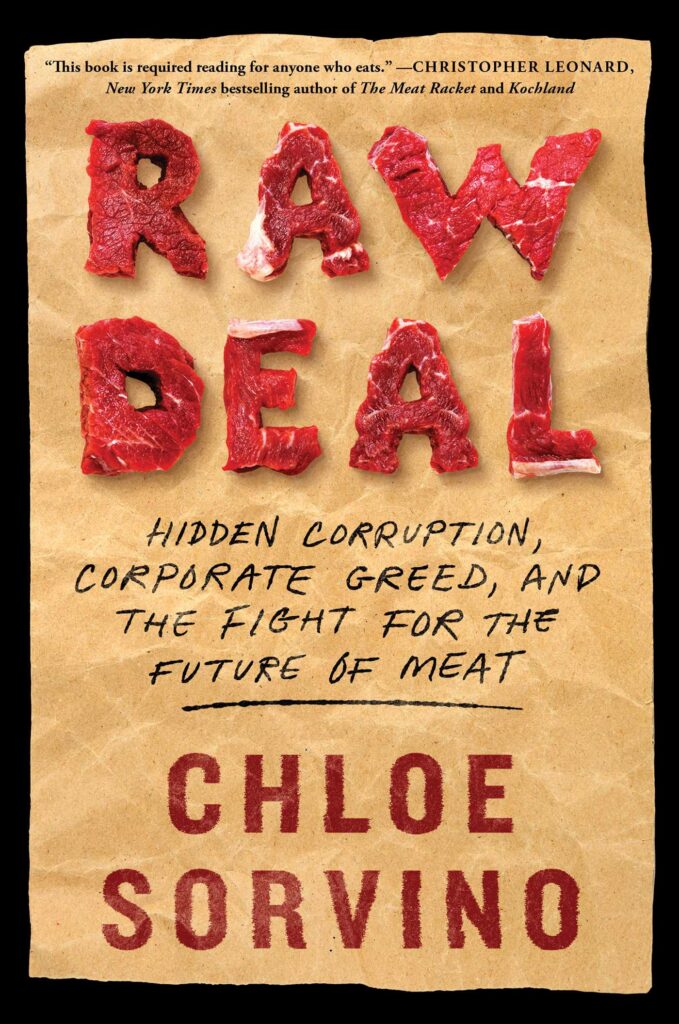
“In the meat industry, in the alternative protein industry, and in this emerging cultivated meat, lab-grown meat industry, there’s a lot of manufactured demand and manipulation of demand,” she told Slate editor Lizzie O’Leary. Sorvino says she’s wary of the ways that Silicon Valley entrepreneurs are driving this emerging industry.
The cultured meat boom follows a massive wave of premium plant-based “meat” brands such as Beyond, Impossible, Good Catch, Lightlife, No Evil, and Gardein. These vegan meat alternatives are estimated to be worth roughly $140 billion worldwide. Though this sector has cooled a bit over the last two years, the slowdown came only after a spectacular surge. Vegan meats now represent about 10% of the global meat industry, and they generated $800 million in 2020 alone.
Understandably, some people assume the new cultured meats are yet another variant of the plant-based craze. Both movements claim similar virtues, and both appeal to a similarly affluent, values-driven consumer base.
But they are fundamentally different: plant-based meats are produced solely from plant-derived raw materials—usually pea or soy–put through an array of processes that transform them into meat-like substances. Tissue cultured meats are 100%-derived from animal sources, and the end products are, in fact, animal tissue.
Some studies suggests that by 2035, cultured meat will make up almost a quarter of global meat consumption. In opening the doors to a world of cellular agriculture, cultured meat has the potential change Big Ag and also change the way we eat forever. For those looking for deathless options, these new technologies provide a way to eat meat produced without the horrors of animal agriculture, and using fewer resources like farm land, water and feed.
Our food system, and especially our industrial agriculture, is one of the biggest causes of climate change, as it contributes to about 56% of non-carbon dioxide emissions and up to 29% of total greenhouse gas emissions. It is too soon to tell whether lab-created meat will actually reduce emissions and lighten the environmental burden of food production.
The more immediate question is whether producers can reduce costs and bring commercially viable products to market, and whether meat-eaters will switch embrace these new alternatives. Investors and tech innovators are certainly betting that they will. Time will tell if the public agrees.
END
Madiha Saeed, MD is a holistic family physician in Naperville, IL. She trained at National University of Science and Technology and completed her residency in 2010 at St. Joseph Regional Medical Center. She is board certified in both Family Medicine and Integrative Holistic Medicine, and has a particular passion for women’s’ health and family health issues. A busy mother of four young boys, Dr. Saeed shares her “walk the talk” lifestyle tips and her “bring it on” spirit with families worldwide via her HolisticMomMD website. She is the author of, The Holistic Rx: Every Patient’s Guide to Healing and Preventing Chronic Disease, a children’s health book series called Adam’s Healing Adventures, and her most recent projects, The Quranic Prescription and The Holistic Rx for Kids.







